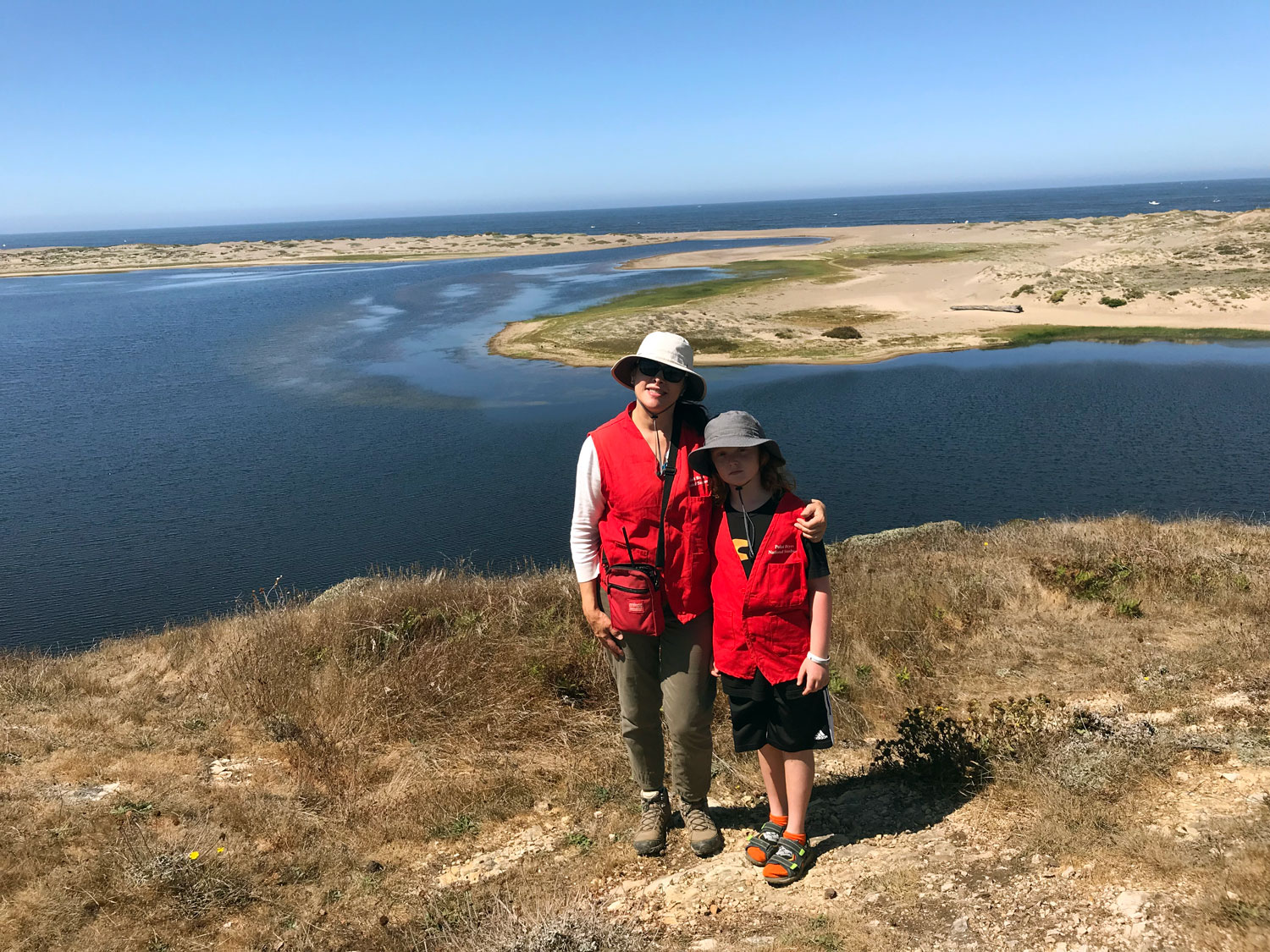August 31: Last day of Snowy Plovering
The Point Reyes National Seashore snowy plover docent program runs from memorial day weekend through labor day weekend. Yesterday was the last day of our first season of volunteering. Aiden and I were stationed at Abbotts Lagoon along with Jeanine and long-time docents Jim and Jeff. Over the summer, we followed the successes (and failures) of the plover breeding season nest by nest. We had many enjoyable conversations with our fellow docents, park visitors, and program manager Matt Lau, and we had plenty of time exploring outdoors.
Throughout the day, we spoke with 200+ visitors about the plovers and answered numerous questions including: Where does the water in Abbotts Lagoon comes from? It’s a mix of both fresh water from creeks and salt water from the ocean and the time of year determines how much of each. Where can you see Tule Elk nearby? Tomales Point Trail, located at the very end of Pierce Point Road. Where are dogs allowed nearby? Kehoe Beach, just a mile or so from Abbotts Lagoon.
Visitors reported seeing a Great Egret, Great Blue Heron, Northern Harrier, numerous Canada Geese, Caspian Terns, pelicans, dolphins, White-Crowned Sparrows, swallows, and more. Our highlights of the day were seeing a bobcat pouncing on prey in an open pasture and two river otters eating a pelican carcass.
The season started dismally for the plovers with most nests failing due to predation by ravens. In the later summer when breeding is normally winding down that’s when the plovers were most successful. Matt Lau noticed there were fewer ravens on the beaches in July and August. This decrease in predators may have provided plovers a chance to thrive. In general, plover breeding success rate is low — only about 20% of eggs make it to a fledgling.
Matt Lau started a plover update on the Point Reyes National Seashore website with weekly reports on the location and count of nests and chicks. These are the counts from the week of August 26:
35 nests so far this season
0 active nest
13 hatched
22 failed nests
5 chicks on the beach
13–15 chicks fledged
The last 5 chicks will fledge in mid-September. With luck, we’ll have 20 more snowy plovers in the world at the end of this breeding season!
A law enforcement ranger, Sarah, came to followup on reports of a boat on Abbotts Lagoon. No boat was found. While motorized boats are not allowed, other boats are allowed provided they are not interfering with the wildlife in the water and on shore. We also met the new law enforcement ranger, Bonnie. Welcome, Bonnie!
Here are 3 facts Aiden would like to share with you about snowy plovers:
The males stay with the newborn chicks until they fledge while the females start another nest. Fledging is when the chicks’ wings are strong enough to fly and they are able to fend for themselves.
If a snowy plover feels their nest is threatened they pretend to have a broken wing to attract attention away from their nest.
Many people mistake sanderlings for snowy plovers. Sanderlings travel in groups along the edge of the waterline. Plovers tend to forage higher up on the shoreline among the wrack for insects.


